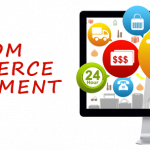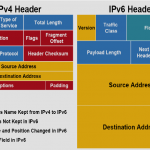Launching App in the Cloud: 4 Things to Keep in Mind
Thanks to cloud computing file sharing, storage and many other aspects of computing have been revolutionized. As for apps cloud holds the place of importance because of reducing cost, enhance the app lifecycle speed and versatility. But while using the cloud for launching one should keep a few things in mind as there are few risks if cloud launching is not done correctly.
The typical point to consider in respect of adapting to cloud-computing should begin with having a clear idea as to what extent cloud is going to benefit the business and how you can achieve that. Choosing a cloud environment is only the second step after going through these considerations.
Back end resources
It is important first of all to have a clear idea about your available resources including the in-house knowledge, expertise in relation to the cloud deployment. Is your IT workforce is experienced enough on aspects like virtualization, cloud optimization, monitoring, cloud security and shared resource pooling and to what extent their knowledge and expertise in these aspects can be counted in the cloud deployment?
Secondly, you must consider whether this pull of cloud experienced stuff can be available in the cloud deployment project for full time. Unless and until you have a clear picture about the strength and weakness of your available manpower your deployment is likely to suffer in many aspects.
Complete dependence on a cloud service partner is not required if you have a proper workforce ready for the deployment. For that reason it is important to analyze the gaps within the organization that you need to fill in and how can you strengthen your available resources by hiring experienced professionals or other resources on a short or long term basis.
Compliance and security issues in cloud infrastructure
In most cloud deployment project compliance and security issues are only addressed at the end of the project but then incorporating meaningful changes become too difficult. As a result after the launch your cloud based app continues with many security and compliance flaws.
It is highly recommended to consider these aspects from the very beginning so that later on the ensuing flaws do not make an irrecoverable impact on the whole architecture and model. First of all it is important to have a clear idea of the security and compliance measures required for the app and then see the gap that you need to cover for employing these measures. Some of the security and compliance areas that you need to consider include the following.
- Compliance to government norms
- Compliance to industry norms and standard practice
- Any data security regulation your app is subjected to.
- Security measure for data stored and transferred.
- Compliance to rules of protection for confidential health information
- Protection for information concerning personal identity
- Protection of credit card and banking data
- Protecting intellectual property from theft
Designing the right cloud infrastructure
After meticulous consideration of your resources and ensuring security and compliance measures it is time to design the right infrastructure. Proper app infrastructure will finally ensure the performance of your app. A recent survey conducted by THINKstrategies offers some helpful insights into this. According to the survey report only one third of the cloud apps do not need to make any changes in the infrastructure in the post deployment phase.
Changing infrastructure after months of deployment means you have not given sufficient though to infrastructure design. Designing an infrastructure that does not meet your business needs will only incur more cost for the app.
Choosing the appropriate cloud model
Finally, it is the choice of cloud model that is going to impact the performance, stability and other growth aspects for your app. Basically two cloud models, respectively public and private are the basic ones upon which all other models are created with different combinations. According to your need you can cloud environment for a single app, a single system or the total organization with varying cloud models. Let us have a look at the various types of cloud models.
- Public cloud model: In this cloud model resources of cloud infrastructure are shared among various organizations. This model facilitating shared infrastructure helps scaling up when the business growth in any of the participant organization need it.
- Private cloud model: In this type of cloud model resources of cloud infrastructure are typically deployed for a single organization. Private cloud is a type of cloud model dedicated to serve a single company or organization.
- Hybrid cloud model: This is a combination of both public and private cloud models. For instance, a company can have a robust cloud environment for its business and can leverage the cloud environment to some extent for its channel partners.
- Multi cloud model: In this cloud model multiple cloud service vendors and technologies can be deployed.
- In house cloud model: In house cloud model refers to the cloud infrastructure in your data center.
- Co-location cloud model: In this model one can own resources but the resources are deployed in the data center owned by a 3rd party.
- Hosted cloud model: Hosted cloud model typically refers to leasing a 3rd party owned cloud service.
Considering the right model is crucial to ensure performance, business growth and profitability. Whether you have required experienced manpower, space, capacity of investment, all of these and many aspects will be crucial to decide the right cloud model for your business.
Conclusion
Cloud deployment is a continuous and iterative process and one always needs to review and adjust things as per the needs of time and changes. So, besides ensuring the things mentioned above you should always keep track of the performance and the areas that can be optimized further and the resources that need to be better utilized to their optimum potential. Even after meticulous cloud deployment in each and every respect one cannot sit back and stay contented forever.
Author Bio:
Mike Kevin is a senior programmer at Tispy leading child phone tracking application and software developer company, His years of experience has helped company to develop numbers of application products.
















